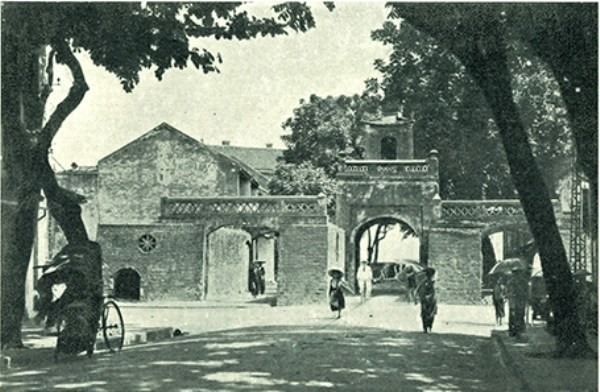 Life & Style
Life & Style

The exhibition features a collection of documents, photos, maps and drawings depicting the daily, cultural and religious life of Hanoians; the Old Quarter, the ancient citadel of Hà Nội, Quốc Tử Giám - the first university in Việt Nam, the Sword Lake and beautiful European and Asian-style buildings.
 |
| Fascinating: French Ambassador Betrand Lortholary (centre) visits the exhibition. — VNA/VNS Photo Hoài Thương |
HÀ NỘI — The announcement of a referendum on widening Hàng Đậu Street issued in 1925 is on display at an exhibition in Hà Nội.
The document is one among 130 important texts and pictures stored by National Archives Centre No 1 which are on show at an exhibition entitled ‘Nostalgic Walk in the Heart of Hà Nội’.
The notice explained that Hàng Đậu Street would be expanded to 20m in width. Maps and information on the road were available for public viewing at the City Mayor’s Building, where residents were able to express their opinions between May 2-22, 1925.
Historian Dương Trung Quốc, vice chairman of the Việt Nam Association of Historical Sciences, said this announcement showcased the process of French people building up the urban area in Hà Nội. It also proved the democracy and Western-style urban management applied in Hà Nội at that time.
“Observing the maps at the exhibition, we can see the way French people urbanised the land of Hà Nội,” said Quốc.
“They preserved traditions and added new elements of modern urban areas such as drainage and Western-style buildings.”
The exhibition features a collection of documents, photos, maps and drawings depicting the daily, cultural and religious life of Hanoians; the Old Quarter, the ancient citadel of Hà Nội, Quốc Tử Giám - the first university in Việt Nam, the Sword Lake and beautiful European and Asian-style buildings.
The exhibition aims to provide visitors with an archival treasure trove of research and information on Hà Nội, thus inspiring love and pride among Hanoians and encouraging them to preserve and uphold the capital city’s traditional cultural values, according to Đặng Thanh Tùng, director of the State Records Management and Archives Department.
“The new thing in this exhibition is the expression. Installation art and exhibition design bring visitors a feeling that they can come back to the past and stand beside old architecture of Hà Nội.”
“It’s not only a space to display old documents,” said Tùng. “It’s a place where old days of Hà Nội are revived.”
People pass a replica of Ô Quan Chưởng Gate to enter the exhibition. Then they can see the landscape and daily activities of Hà Nội’s people in the 19th-20th centuries reflected in the exhibits of old documents.
Attending the exhibition, visitors can see how Hà Nội has changed. Many buildings such as the Hà Nội Post Office, Ô Quan Chưởng Gate and Hà Nội Opera House have maintained the same appearance but they are now surrounded by many other constructions.
Meanwhile, some architecture and surrounding spaces have changed, for example, Hòa Phong Tower of Báo Ân Pagoda beside Hoàn Kiếm (Sword) Lake. Now, the pagoda is destroyed. There is nothing left but Hòa Phong Tower located on the pavement next to Sword Lake.
The exhibition will run until December 31 at the National Archives Centre No 1, 18 Vũ Phạm Hàm Street, Hà Nội. — VNS
 |
| Ancient structures: A photo of Ô Quan Chưởng Gate in the 19th century displayed at the exhibition. |




